Debate 1 - Europan 12 theme: Experts and Cities Points of view
Forum of Sites - Malmö (SE) - Debate 1
Introduction
by Chris Younès, member of Europan’s Scientific Committee
A philosopher and anthropologist, Chris Younès is a member of Europan’s Scientific Committee and works on similar questions with cities such as Rennes, Le Havre and Brussels.
and Didier Rebois, architect, teacher, Secretary General of Europan
Chris Younès: The topic of the adaptable city raises the question of the diversities and multiplicities of singular situations, but also the question of representations. The 20th century was a battlefield between two highly polarised visions of the future of urban environments:
- the idea of a city governed by planning and development models;
- the idea of a city of uncontrolled and spontaneous development.
Today, at a time of radical uncertainty and crisis, these two visions have been supplanted or supplemented by a different kind of project form, with an acceptance of the need for the made-to-measure and of the importance of being able to change tack at the right moment. This is a different ecology of action, where the issue is to imagine situated possibilities that are simultaneously trans-scalar, trans-local and transactional. In this sense, Europan projects can act as crucibles of the future, a kind of narrative of the future of the sites, scenarios of resilience relating to changes in ways of life, values and operational processes.
This topic of the adaptable city is a guiding thread, or a springboard relating to the crucial issues facing cities today. We propose to debate three particular issues, which bear a particular relation to this theme.
ISSUE 1: TO THINK ABOUT THE ADAPTABLE CITY IS TO THINK ABOUT HOW SPACES ARE INHABITED, CO-INHABITED, SHARED
Chris Younès: An inhabited space is always adapting. To inhabit and to provide habitat means adapting to changes in ways of life. This relates not only to housing but to an anthropological way of being in the world that establishes a synergy between part and whole, self and others, human and nonhuman. This implies a tension and dual belonging between here and elsewhere. It is not a fixed territorial attachment, but an open qualitative space, loaded with memory and novelty.
The complementarity of the local (specificity of place), the trans-local, of the near and far, is highly fruitful. The global, the trans-local tends to prevent the local closing in on itself, and the local protects inhabited spaces from a deadly uniformity.
In this encounter, the role of shared spaces is crucial: their necessity in making the city, but also their new configurations which generate a political and aesthetic way of living together, of settling and of moving.
Shared spaces are also spaces of shared discourse, in other words processes that bring together very different categories of people to devise and develop the most appropriate scenarios for sustainable metamorphoses.
Didier Rebois : Two completed Europan projects illustrate the resonance of the theme of inhabiting in the competition.
The first project is the transformation of a great “rock” in the middle of the town of Alicante in Spain, where the climate is very dry. The focus of the competition problem was the border strip between the town and this hill. The proposal of the French winning team, Obras Architectes, was not to focus exclusively on the boundary, but to turn this arid land, dominated by a fortress, into a real park, now Ereta Park, highly prized by residents and tourists alike. The steep terrain was formerly unused by the inhabitants, whereas today it is “inhabited”. Because of its location, overhanging the town centre, the park can be seen from everywhere. When you are in it, there is a relationship with the area, the horizon and the sea. There is this relation to the horizon, to the global, and at the same time, at local scale, the park is made up of a multiplicity of varying mineral and planted spaces where people can walk, rest, work, etc., where there is a great attention to uses. It is a place which, despite its aridity and because it has been transformed and adapted, is a locus of interesting urban practices.
Chris Younès : In these projects, we see the force of the issue of the strategies used to transform an area. How can an area be transformed and reborn from its ashes in another form? And it is very interesting, because often municipalities are concerned about the identity of a place, of an area, and through these examples we can see how this identity and its specificity are in movement: it is the same and yet it is different. The landscape architect Gilles Clément has also worked on the idea of landscape in movement and this notion of changing identity is also interesting to explore with the idea that something becomes, but also becomes something else. So here, I find that Europan already has many scenarios, strategies or possibilities of becoming.
ISSUE 3: TO THINK ABOUT THE ADAPTABLE CITY IS ALSO TO THINK ABOUT THE FORMS OF A NEW ALLIANCE BETWEEN CITY AND NATURE, AS WELL AS THE PARADOX OF THE DESIRE AND HATRED FOR NATURE
Chris Younès : The very powerful desire for nature in an urban world is not to do with nostalgia or naïveté, a wish to return to a previous world, nor is it a rejection of the city, but the quest for another way of inhabiting the city and being human. A new politics of civilisation needs to be developed, as Edgar Morin asserts. Superimposed on a technical vision that was the guiding thread of a certain form of modernism, the quest now is for a new alliance between nature and the urban, a desire to harmonise human and universal rhythms. Nature, a mysterious power of ever-renewed geneses and metamorphoses, arouses strong emotions, poetic, urban and architectural expressions, along with ethical and aesthetic reassessments. It relates to water, earth, air, fire, fauna, flora, the rhythms of the seasons, of day and night, of the heart and of the breath, or of birth and death. It brings threats, but also peace, it is both wild and domestic. Numerous hybrid and symbiotic forms are being explored at different scales: eco-architecture, managed density to protect woods and farmland, planted malls, urban gardens and parks, microclimates, soil fertility and biodiversity management, urban agriculture, recycling, landscape, all ways to redefine the city as nature-city. It is another mindset and approach to the living world.
A certain number of related questions arise:
- How do we take hold of the theme of the adaptable city, which is part of the problem of urban revitalisation and find relevant action and response strategies, strategies of “vivacity” to use the expression coined by the president of Europan France, Alain Maugard?
- How, in the Europan site packs, do we convey what we mean by ways of life and local culture, between local and global, attachment, memory and mobilities?
- How are shared spaces and communal spaces changing?
- How do we respond to the challenge of adapting unadaptable spaces? How do we recreate them and understand what it means to represent them and imagine other possibilities?
- In what way can the adaptable city be envisaged as a new alliance between city and nature and as an invention of other revitalising hybridisations?
Didier Rebois : The first Europan project implementation to illustrate this hybridisation between nature and the city is in Ceuta in Spain, in an area of hills descending into the sea. The question is how to inhabit a landscape of this kind? The architects, MGM Morales-Gilles-Mariscal, took the nearby fabric as their model by using the topography of the area and following the contour lines. The buildings are attached to the slope like blocks, metaphorical rocks, implanted in this strong natural environment. The project draws all its meaning from the powerful presence of the sea, showing that it is possible to inhabit a natural space respectfully, while creating a landscape that mixes nature and artifice.
Andreas Trisko, urban planner for the City of Vienna (AT):
Adaptability is of course a very important issue in Vienna. When we talk about adaptability, ways of life, there is always this priority implicit in the commission, to remain at the top of the city rankings. This is about the city’s capacity to continue developing. In the European context, Vienna is a concentrated and very dense city, which gives us many possibilities to respond to the different ways that its inhabitants live.
For us, the question is more about the balance between the built-up city and the context of growth. How do you build a city? In all European cities and in Vienna in particular, after the war we built estates and not cities. Our aim now is no longer to build estates, but to establish neighbourhoods. Vienna acquires 20,000 more inhabitants every year, the equivalent of a small town. The important question is: how do I go about building the city within a system of development that is too specialised? There are developers who specialise in commercial property, others in housing, with the result that buildings are disconnected from each other, subject to different regulations. Today, the level of specialisation is so great that we do not build cities, but specialised spaces, whereas a city relies on the interaction between social space, work, housing, etc. We need to start building fragments of cities that have new meaning.
A second theme would be to focus less on construction, and more on socio-graphic processes and spatial representation. What is positive, is that certain districts have been renewed, but it is important to be able to moderate this process of gentrification by making the city more adaptable. It should not be forgotten that a city should be developed with its inhabitants, the people who use it. It is a significant priority for Vienna as well.
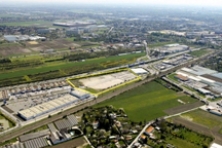
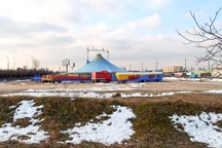
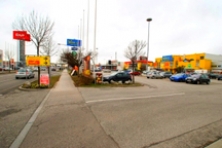
Kurt Werner, Mayor of Konstanz (DE):
I represent a medium-sized town, because Konstanz has a population of 85,000, a university and a University Institute of Technology. If we add the neighbouring town of Kreuzlingen in Switzerland, the population exceeds 100,000, the size of a small capital. The underlying purpose of this alliance and the submission of a joint site for the competition, apart from crossing borders, is above all the richness of the exchange between the two cultures that arises from living together. This is characterised in the difference between existing planning tools, to which we need to give new impetus. The evolution of cities has always brought new needs and these unique processes, which have evolved over centuries through to the present day, are visible, and this forges the richness and quality of our cities. Nevertheless, we need to acquire new working goals and look for new solutions, to take decisions in a context of globalisation and competition between cities. At a time when certain industrial sectors are disappearing, we need to find new solutions in order to ensure future employment. What forms can we find for abandoned industrial zones? Konstanz used to have a textile industry, now gone, which has released space for housing or activities with high added value. What do we do with areas like Little Venice, the Europan site, whose landscape quality was ignored for years and whose potential we now recognise as an essential linking component between the two towns of Konstanz and Kreuzlingen? Inside these zones, there are problems to resolve. There is a small boatbuilding yard where we need to think about future uses, with the possibility of developing leisure around boating. We also need to find a solution to the division between the old town and the water created by the railway infrastructures. And the central question, of course, remains that of traffic – mostly private cars – and congestion in both towns, in particular at weekends, further exacerbated by tourism.
All these factors have to be addressed through a targeted approach and global planning, which Europan seems able to offer, with the creative work of young, multidisciplinary teams around these questions of traffic and wasteland regeneration, linked of course with housing, employment and tourism. That is why the two towns are interested in participating jointly in this competition.
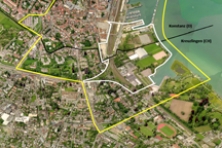
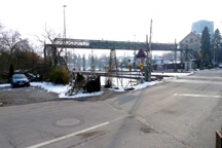
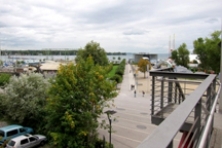
-2- WAYS OF LIFE
Chris Younès : Now we can look at the extent to which the issue of ways of life, their changing nature and in particular the way in which we inhabit, can be conveyed to the teams. The question of the inherent culture of an area is very important. It is striking to see in the different interventions how each person gives a narrative of a very specific milieu. It is also certain that the competing teams will come from different countries, so what is difficult and does not appear on the maps, is to understand the culture of the place, the priorities that the municipality wants to set for the transformations, the opportunities, the possibilities of inhabiting or cohabiting differently.
Pierre Barros, Mayor of Fosses, Roissy Porte de France intermunicipal district (FR):
What the town of Fosses can contribute on this discussion of adaptability and to the work that the competition entrants can do, in a particular context, is that we need to change the economic model that forces areas to adapt. In Fosses we have 9500 inhabitants, and the site is a small part of the town, but part of a wider development relating to the Grand Paris programme, relating to the Île-de-France Region, relating to governance processes triggered by the decentralisation laws. In this part of Fosses, which is in fact the town’s original village, we are in a process of urban construction directly linked with farming activity, which has seen the grouping of 3 to 4 big farms, now completely obsolete in terms of agricultural production tools, even though this is the bread basket of Île-de-France. Today, these farms are surrounded by housing estates, but what should we do next with these farm buildings, some of them remarkable, which form the character and typology of this town, often alongside other listed buildings, like an 11th century church? How do we go about preserving places where farmers can still produce? How do we go about producing an alternative to now obsolete agricultural models? We need to think now about what we will find in place tomorrow, how do we develop market gardening, how do we develop short supply chains, etc.? How do we ensure that, in farming terms, the Paris region can meet the food needs of the people of Île-de-France? So there is a whole set of questions which suddenly crystallise around a small town, questions that combine the local and global: there are things that need to be reinvented, revisited. And the Europan responses could offer a project that is exemplary in its answers to fundamental questions about development in Île-de-France. We are talking about a big metropolis which is continuing to develop, and which needs also to protect its agricultural areas, to keep pace with the economic changes taking place around Roissy, such as the closure of Peugeot SA Aulnay, with tens of thousands of jobs that are going to be lost. What will be done with these abandoned factories, how do you pursue urban renewal in these industrial zones? How do you go about urban renewal, while working on density of housing? I think that these are fascinating questions which confirm that the city must indeed be adaptable. Any intervention by human beings to create their nests anywhere must be designed in such a way that it can be revisited and remade regularly.
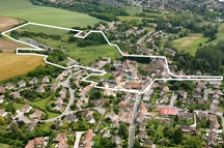
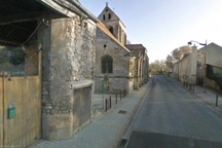
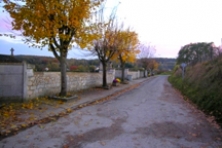
Niek Verdonk, 'Florijnas' supervisor, Municipality of Assen (NL):
We want to transform former industrial zones into an attractive intra-urban housing area. But there are several problems. First, there is the idea that in a time of crisis, with problems in obtaining bank loans, it is difficult to sell apartments or family dwellings. But the main problem is that we have a superb masterplan in which we show the beauty of a potential future, but we need to find how to achieve this utopia step-by-step. Because we are faced today with an uncertain future. So we have found funding for a small part of this large area, and the city and the developers have decided to begin this small housing project right at the heart of this industrial zone. We will then need to persuade people to buy or rent these apartments and to live in this industrial zone environment, which some may find attractive, but others not. That is the main theme on which we want to work in this Europan 12 session.
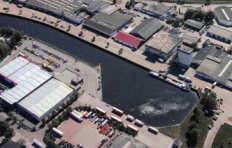
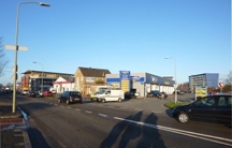
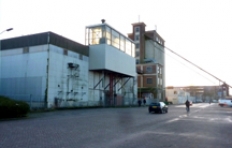
Didier Rebois : But all the same, you are lucky to have on your site a canal, water, elements which can form the basis for a project, even if it is no longer part of a masterplan. What interests us is precisely how the local areas that you submit for the competition are marked by these new ways of life, which relate to much larger scales, and how we can convey this change and these new, specific urban rhythms to the competition entrants.
Socrates Stratis, architect, member of the Scientific Council:
I think that what is important is to emphasise the fact that, in order to successfully reveal the unique character and specificity of each location, we need to reflect the relationship of scale between the local and global, and that there exists in every town and city multiple relations between these different components that are specific to the context. So what is very important is that the competition specifications should explicitly mention which stakeholders are involved at these different scales, since they can play an important role in the implementation of a project that could become a tool in this new quest for competitiveness. So the specificity is not about a purely geographical concept of local and global. It is the relation between the different scales that makes the site unique.
Didier Rebois : We emphasised, in introducing the issues involved in making a city adaptable, that inhabiting is not simply inhabiting one’s home, but also inhabiting one’s city. And this way of life dimension, specific to each country, each city, each town, each context, needs to be clearly explained. On every Europan site, half of the submissions come from entrants from foreign countries, who are therefore not part of the local culture of the site. Indeed, what is so interesting is the acculturation brought about through the encounter between young architects from all over Europe, and these local situations in which cultures are in motion. However, the site packs need to help them to understand what it means to inhabit a particular urban territory. The site pack is not simply a technical dossier, but also needs to be a guide to a culture, an evolving way of inhabiting, if we want the spaces proposed in the projects to be relevant to the context.
Chris Younès : The relationship of scale between local and global is important, but also the question of shared spaces, because the quest to make an urban milieu is ultimately about making spaces that can be shared. And we know also that what characterises today’s evolution in ways of life is the withdrawal into the private cocoon, individualisation… So it is also about finding systems of compensation to avoid this collective or individual introversion. The question of shared spaces is also extremely important for us in this theme of the adaptable city, in working out how people can coexist, how to negotiate the transformation of these shared spaces.
Patrick Renaud, Chairman of the Roissy Porte de France Intermunicipal District (FR):
Roissy Porte de France is a new conurbation around Roissy-Charles de Gaulle airport, north of Paris. It is an area with particular characteristics. In Île-de-France, perhaps in the whole country, it is the sector that is developing the most and where there are the most jobs. On the other hand, the area north of this conurbation is highly rural, whereas to the south, near the airport, there is a high level of urbanisation. Greater Roissy encompasses 45 municipalities or intermunicipal groupings covering 3 departments of Île-de-France, which is not an easy thing to manage, but it is already an achievement that these municipalities have been prepared to come together to collaborate on this new residential and employment zone around the biggest airport in mainland Europe, with largely rural areas to the north and urban areas some of which are under pressure. So we agreed that we needed to work together, but also to produce a joint territorial coherence scheme. We will be able to go beyond the usual issues of intermunicipal disputes about the distribution of businesses, housing, cultural amenities, and obviously to have smart and modern public transport (which we don’t have: the Paris region is peculiar in this way: it is an area of high GDP, but with very marked disparities). However, a question then arises: what do we offer the people who live there, who have to tolerate the noise of the airport and have the highest unemployment rate in Île-de-France in an area where there are the most jobs? To resolve this paradox we need to equip ourselves with a different global idea of the territory, where a village of 60 people can coexist with cities of 80,000. So how do we work together with a shared vision? It is here that we need Europan, and for this purpose we chose the town of Fosses, a new town of 10,000 people, where the objective is to develop by reclaiming the history of the place through culture and to say to the inhabitants “You live in a place that has a culture and a history”. And through this system and its rediscovery of a shared vision of the territory, and despite the disparity of its components, despite problem urban areas and paradoxical situations, we can try come together to build housing in highly rural areas without transport, yet at the same time without using the most extensive area of farmland in Île-de-France.
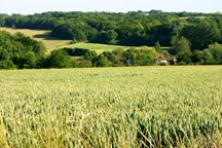
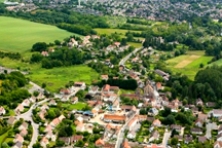
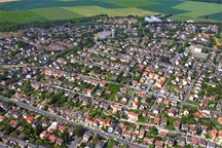
Chris Younès : Once again, we can see that, on the issue of shared space, there is the space of shared discourse; and there is also the question of what direction to go in. This idea of involving stakeholders, the population, is something that is taking on a enormous importance. Talking together is fundamental. And certainly, with regard to adaptability to singular situations, it is also about reconciling conflicts, contradictions, finding ways to change them and make them coexist.
-3- ILL-ADAPTED SPACES
Luis Roma, Mayor of Vila Viçosa (PT):
Vila Viçosa is a small town in the middle of Portugal, near Spain, whose main economic activity is marble. We have had the crisis and at the moment we have a lot of problems, because the market has become very tough. As a result, many companies have gone out of business. Now we find ourselves with several empty spaces. We even have a defunct railway station. That is why, through Europan 12, we are trying to do something to resolve this new inactivity in a strategic area at the entrance to the town. It is a place with a significant history that we need to take into account in regenerating the sector.
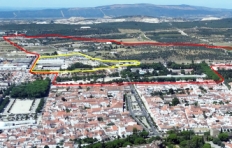
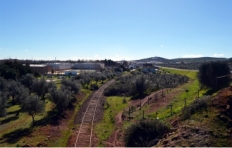
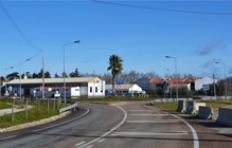
Christian Mermet, Secretary of the Board of Val-de-Travers, Couvet site (CH):
Couvet is a village of typically Swiss scale, around 2500 inhabitants, located along the Reuse, a river that runs down from the top of the valley from Val de Travers to Neuchâtel. The site is a place that has a culture, a legacy, and this collective memory was disrupted in 1988 by the shutdown of the textile industry. Since then, development has tracked needs. Certain buildings have been refurbished and others are in a more or less decrepit state. It is therefore interesting, whilst taking into account this issue of a collective legacy disrupted by the closure of the site, to conduct a broad regeneration of the site that also reflects the relation between nature and industrial buildings in an area of lush vegetation.
In programmatic terms, it is very open. We are looking for ideas on different aspects: housing, industry or shops. What is particular about this site is that 95% of the land is privately owned. There will therefore have to be interaction between the landowners and the proposals we receive.
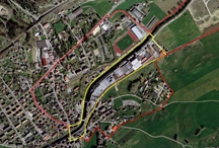
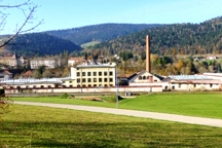
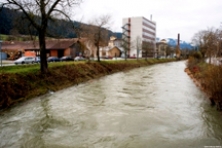
Jean-Yves Bochet, Municipal Councillor for Saint Herblain (FR):
Saint-Herblain is a town of 44,800 located west of Nantes. We have proposed a site for Europan 12 in order to obtain an overarching vision that we lack. The site is a 70 hectare area which gave the town a strong identity in the 1980s when this residential district, innovative at the time, was created. If we had to recreate the district today, we would adopt the same specifications and the same ideas. However – and perhaps other towns face this kind of problem – it doesn’t work as well as we would like. It is a neighbourhood with very comfortable housing, walking and cycling paths and nearby services. Despite this, we need an outside perspective to renovate it, preserve the desire to live there and adapt it to the 21st century. And what we liked about the Europan approach is this viewpoint from young European architects, which we would like to apply to our site.
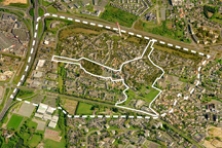
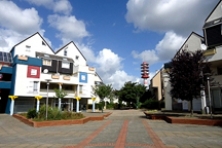
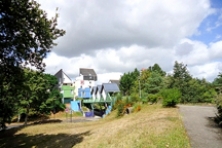
Chris Younès : It is clear that this idea of revitalising areas is very important and that the possibility of a narrative addressed to a particular place can create new momentum, new energy, or in any case reinforce the energy already present or create it anew if it has been lost.
-4- RELATION BETWEEN CITY AND NATURE
Chris Younès : These days, we see nature as a possibility for regenerating urban quality, living better where we are. It would therefore be interesting to have a fewer reactions to see what form, what appearance, this can take. And also to see, in our communication with the candidates, how we can help them to avoid responses that are too generic, such as the green city, responses that are much too abstract. This relates to imagination, symbolism, physical, biological and climatic realities, etc.
Kari Hjermann, landscape architect for the town of Bærum (NO):
Bærum is a town of 116,000 people a little over 10 km from Oslo. The site is at Hamang, in the Sandvika district, the administrative centre of Bærum. Hamang is 500 metres from the centre and the station. It is a former industrial zone that we wish to develop. It houses the buildings of a former paper factory which could be converted to new uses. The key component of this site is the presence of the river, which flows through the area. Because of flood risk, there are wide green areas along the banks, which need to be protected. For this project, therefore, we are looking for new uses for the river connecting Hamang and Sandvika, where the river arrives. We also want to explore density. We are close to the centre of Sandvika, and also Oslo, and the population is growing, to the extent that we would like to attract more people to Sandvika where, at present, there is not much housing, but mainly commercial and service functions. We therefore have two major needs: new uses for the river and increased density, without sacrificing the quality of the spaces and buildings.
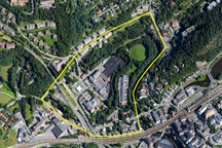
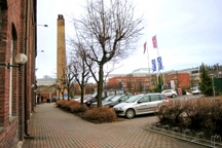
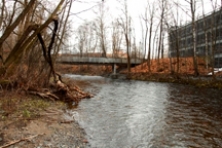
Lucie Bore, Paris-Saclay site (FR):
In all, Paris-Saclay encompasses 49 municipalities which are working on a single development-research-innovation-industry-education project. This means that the development projects focus on certain areas. The one chosen for Europan has received little attention so far. It is an existing and still functioning university site and also a listed natural site, protected for its landscape quality. There are buildings on it, but they are hidden. That was the first condition for the creation of the campus. However, the buildings are so well hidden that the campus is completely unfamiliar to the inhabitants of the adjacent communities. And the students, researchers and teachers, some 15,000 people at present, are also unfamiliar with the local town centres. The advantage is that it is a magnificent natural site, much appreciated by its users. The disadvantage is that there is very little urban intensity, because with people who only commute to and from the campus, there are few shops or services in place, and pathways somewhat lost in the middle of the forest where, in the evening, it is dark with muddy shortcuts under the trees. It is therefore a way of inhabiting nature that can sometimes be a little aggressive, where nature can be a little hostile. And the residents themselves are a little violent with this natural environment: they enjoy the view of the forest, but they only go there by car. The priority today in eco-usage. What can we do to make this site of benefit to the people who live there and not only to students and researchers? In particular by creating many more possible uses to encourage visitors. For this, we also need more sources of finance, because at present the university lacks the resources to maintain all these spaces. The other question is how to landscape them? There is woodland, areas that could be laid to lawn, the somewhat wild banks of a river that runs across the site: how can we encourage people to use these sites? Because leaving them whilst does not seem an appropriate solution. And from the point of view of innovation, the question is: how do we encourage uses that do not yet exist? This is the uncertainty about the future we were talking about. But if there is one group of people who have unusual and innovative practices, it is students. So how do we facilitate new cultural practices? Students are at an age that is supposed to be a time of discovery and intellectual exchange. So how do we promote unknown uses and, above all, how do we persuade all the stakeholders to finance projects for unknown uses, for which no clear need has yet been expressed?
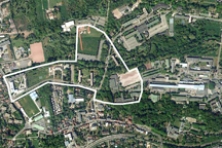
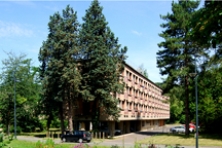
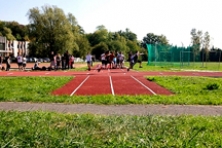
Bernard Landau, Deputy Director for Urban planning for the City of Paris (FR):
How do you approach this question of nature in a very dense city like Paris? Not every city has the same heritage, and we know that Paris is short of green basis. We also know that it would be difficult to knock down neighbourhoods in the historic centre to build squares. But today, the way this question about nature and the city arises in Paris is about more and better nature in the city. We are now aware that nature is part of the chain of biodiversity that is essential to sustainability. And the way that we introduce this theme into a peripheral area of the city of Paris, be it a stadium, a planted terrace, the management of green spaces, garden estates run by the city or the private sector (ultimately the way each of us introduces nature at our own scale), the issue perhaps is about thinking how each component contributes to giving a role, which is not purely contemplative, to the natural living world within urban space. I think that cities need to look at things in a new way. This question also overlaps with research, because when we think about these cases in terms of climate change, we may also need to think about the question of plant varieties which, in the future, are better able to develop, and at the same time, the need to have nature in cities relates to the phenomenon of climate change or global warming.
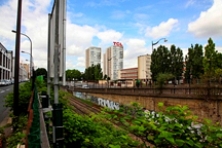
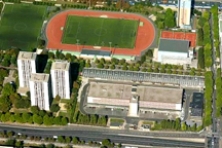
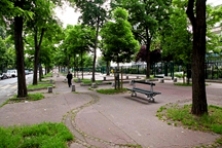
Chris Younès : Nature can take several forms, as you have described, and it is clear that all the urban pedestrian routes, all the things being introduced, somehow help people to discover the dimension of biodiversity, the living dimension of their milieu. In addition to the different facets of the inhabited milieu, another question arises: how does a city dweller learn about nature? And when we talk of adaptability, we are in fact talking about being capable of vivacity. I very much like this idea of cities that are capable of living. In vivacity there is vitality, urban vitality, the vitality of urbanity, but also the capacity to respond to a situation. This will undoubtedly be a very important point in this theme of adaptability. Finally, the other important point is the significance of the project as narrative, as representation. Many writings today say that we are capable of doing much more than we can imagine, that there is a crisis of representation. Not only do we not greatly imagine the future, we find it hard to know where we are going, but we even find it hard to represent the present we are in. And in some way the project gives an image, a representation that can stimulate debate and will, in a certain way, feed into this new momentum. And what will give vivacity to the adaptable city is to mobilise those who inhabit, those who produce, those who imagine, those who move around the city, because thinking about the future of the city should not only be left to experts.